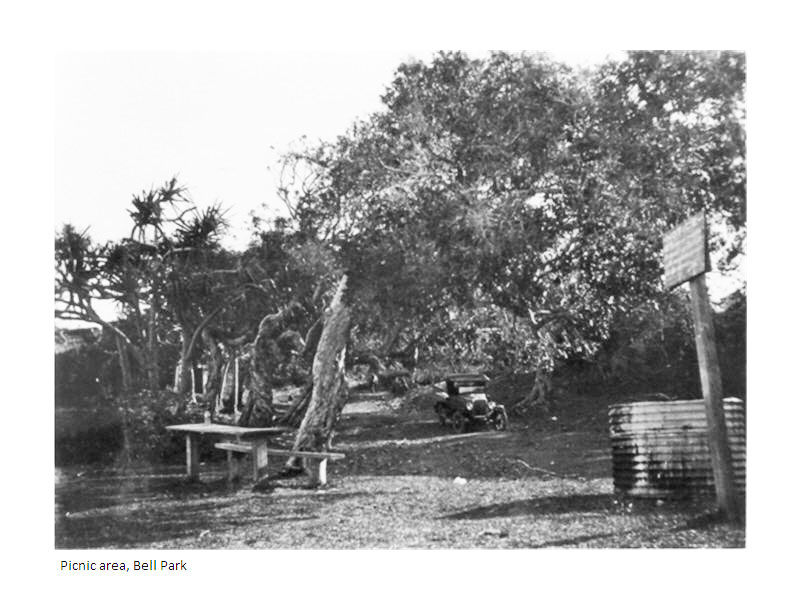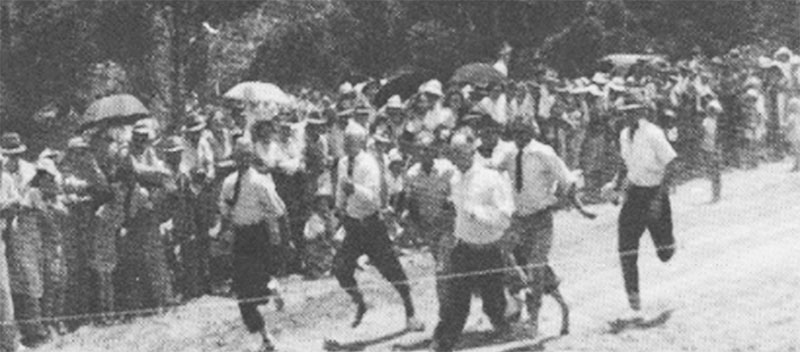BELL PARK: THE PEOPLE’S PARK
Beginning as a Botanic Gardens
In April 1892, the Emu Park Pensioners and Ratepayers Assoc. applied to the local authority to gazette about 40 acres (16ha) of land lying between Hill & Pybus Sts as a reserve for a botanic gardens and a recreation area. The section designated Botanic Gardens was 20 acres (8ha), extending north from Hill St between the Railway Reserve and Fisherman’s Beach. Fisherman used a defined area for their trade in fish and oysters and Council ruled it “Not for residential use”.

A group of volunteers called “The Emu Park Improvement League”, led by Mrs E Bell began developing the area by clearing undergrowth, planting trees, building park structures and fund raising while cooperating with EPRRA, QCWA, residents and visitors alike.
In 1934 the Botanic Gardens was named Bell Park in her honour.
Organisations helping Bell Park.
Campers were only allowed in the northern end of the reserve but activities swelled between 1910 & 1940. The QCWA and EPPRA worked together to develop park camping services. In 1949 Council gazetted around 8 acres (3.2ha) north of the Botanic Gardens as a camping reserve on which was built the present day caravan park. The long shed or kitchen was built by Mt Morgan mine in 1951 and by 1958 they had included a grass running track and built the judge’s tower.

Bell Park trees & community use.
Hoop pines were the main species introduced into Bell Park but pandanus, paperbarks, figs and Indian almonds were also planted. Trains brought picnic crowds in the thousands to Emu Park during the 1950’s & 60’s. The Mt Morgan mine picnic was the largest, followed by railway workers, meat workers and sporting clubs.

The Lions Club of Emu Park continues this ‘monster picnic’ tradition with monthly markets, Festival of the Wind and Oktoberfest. Concern for Bell Park’s future resulted in ‘The Save Bell Park’ group achieving the Park’s listing on the Qld Heritage Register in April 2003, albeit with a greatly reduced area of 11.2 ha. The successful listing was based on 3 criteria: aesthetic, historic and social significance. C Ryan (2020) Bell Park Voices.
Project Committee:
Dennis Wex, Karen Spiers, John McCabe.
